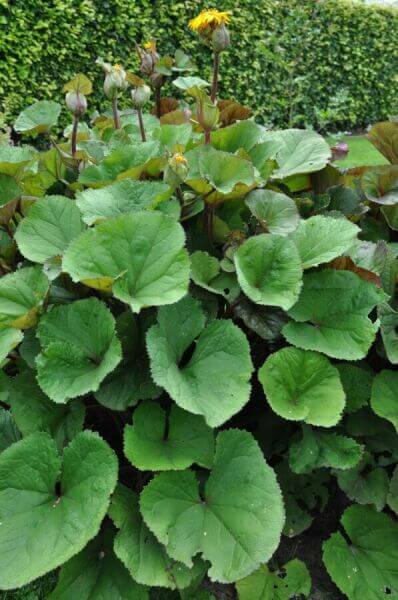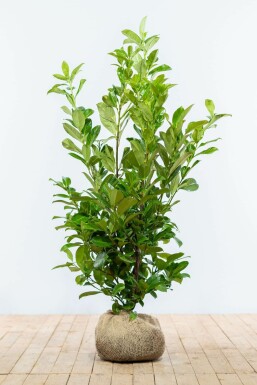Best Hedging Plants For Spring Flowers
Best Hedging Plants For Spring Flowers
Blog Article
Hedge Plants For Winter Berries
Boost your garden's allure with lush hedge varieties such as Yew (Taxus), Thuja, Laurel, Photinia, and Bamboo, celebrated for their structural integrity and ecological advantages.
Yew and Thuja provide evergreen coverage and winter season resilience, while Laurel offers quick growth and broad, fragrant leaves.
Photinia includes seasonal appeal with its lively red foliage, and Bamboo lends a low-maintenance, peaceful atmosphere.
These hedges improve air quality, decrease sound, and create tranquil, private spaces.
Proper planting, spacing, and maintenance guarantee energetic growth and eco-friendly consistency.
Explore how these rich ranges can raise your garden's appeal and wellness.
Secret Takeaways
Transform Your Garden With Lush Hedge Varieties
- Select Yew for its dense, evergreen development and unparalleled longevity.
- Choose Laurel for its quick development and broad leaves, making sure fast privacy.
- Choose Photinia for its dynamic seasonal foliage, which turns a striking dark red.
- Use Bamboo for a low-maintenance, winter-hardy hedge with visual appeal.
- Area plants 2-3 per meter and prune frequently for optimum development and health.
Popular Hedge Plants
When changing a garden with lush hedge varieties, it's vital to consider popular hedge plants such as Yew, Thuja, Laurel, and Photinia due to their unique characteristics and benefits.
Yew (Taxus) is highly esteemed for its longevity and dense, green growth, making it a prime choice for enduring landscapes.
Thuja is kept in mind for its evergreen foliage and robust winter resilience.
Photinia adds seasonal vibrancy with red leaves that darken over time, creating vibrant visual appeal.
Laurel uses quick development and fragrant, broad leaves, ideal for quick privacy.
Additionally, Bamboo is an excellent choice for atmosphere, using a low-maintenance, winter-hardy choice that improves the garden's aesthetic with its elegant, swaying walking canes.
These choices cater to a range of horticultural requirements and choices.
Benefits of Garden Hedges
Garden hedges offer a multitude of advantages, making them a valuable addition to any landscape. These natural barriers are affordable to implement and supply considerable wind security, improving air circulation and adding to noise reduction. The dense foliage of hedges like Thuja and Beech ensures privacy by blocking visibility, developing a peaceful and secluded environment.
Hedges likewise play an important role in microclimate guideline, providing a steady environment that promotes plant development and lessens temperature changes. Their intricate leaf structures filter toxins, improving air quality and adding to a healthier garden community.
Moreover, hedges master sound reduction, soaking up and deflecting sound waves to lower ambient sound levels. This double functionality of supplying both visual and acoustic personal privacy enhances the general tranquility and visual appeal of any garden.
Planting and Maintenance Tips
For an effective hedge, careful preparation of the planting area is important. Ensure the soil has appropriate pH and drain to support strong root development.
Space the plants properly for the chosen types. Water the hedge frequently during its preliminary development stage, adjusting as required with seasonal modifications.
Carry out a systematic bug control and illness avoidance strategy, using organic or chemical treatments when necessary. Frequently examine for aphids, mites, and fungal infections.
Apply mulch to keep wetness and reduce weeds. Seasonal pruning promotes dense growth and air circulation, essential for plant health.
Following these standards will assist you cultivate a lively, well-maintained hedge that enhances the appeal of your garden.
Spacing and Trimming Guidelines
Spacing and Cutting Standards
Correct spacing and trimming are vital for cultivating healthy, aesthetically appealing hedges. Sufficient spacing guarantees each plant receives enough nutrients, light, and airflow.
Follow these standards for optimum hedge maintenance:
- Spacing: Position hedge plants 2-3 plants per meter to motivate robust growth.
- Pruning Techniques: Routine pruning is vital for maintaining desired hedge height and shape. Cut brand-new growth in summer season and cut back older wood throughout winter.
- Seasonal Care: Change trimming techniques and schedules according to seasonal requirements to ensure plant health.
- Hedge Height: Frequently screen and cut to preserve the wanted hedge height and achieve consistent visual appeals.
Abiding by these steps will guarantee your hedge flourishes, boosting both the appeal and functionality of your garden.
Selecting the Right Hedge
Picking the Right Hedge
Selecting the proper hedge includes assessing aspects such as fully grown height, foliage density, and environmental durability. Effective hedge plant selection requires comprehending each types' development attributes and site-specific adaptability.
For example, Yew (Taxus) provides exceptional longevity and dense growth, while Thuja is notable for its winter strength. In addition, considering maintenance requirements is important; fast-growing types like Laurel or Privet need regular trimming, whereas low-maintenance options like Bamboo or Ivy might be more suitable for those looking for very little maintenance.
Ecological aspects such as soil type, light schedule, and wetness conditions should also guide the selection process. This careful approach guarantees the selected hedges will flourish, offering both aesthetic and functional benefits to the garden landscape.
Delivery and Planting Advice
To ensure your hedge plants grow, they need to be provided by specialized couriers and planted immediately upon arrival.
Follow these essential actions for successful planting:
- Soil Preparation: Enhance the soil with natural matter to improve drainage and nutrient material.
- Planting Depth: Produce a trench two times the width and equivalent to the depth of the root ball.
- Watering Methods: Water completely after planting, keeping the soil regularly moist but not filled.
- Mulching: Use a layer of mulch to maintain moisture and suppress weeds.
Consumer Assistance and Service
Given the important function of prompt help in horticultural pursuits, our consumer assistance group is available 6 days a week through telephone, e-mail, and social media to use expert recommendations and swiftly deal with any issues. Their dedication to quick reaction times makes sure client fulfillment by resolving inquiries associated with plant health, ideal planting techniques, and upkeep schedules.

----------------------
Telephone
Within 48 hours
This thorough support system, reinforced by an outstanding 9.3/ 10 client score, highlights our dedication to boosting the gardening experience for every single customer.
Frequently Asked Questions
How Long Does It Take for Hedge Plants to Establish?
Hedge plants generally require one to three years to become fully established, with the exact duration differing by types and growing conditions.
Reliable care throughout this important duration is vital for robust development. Constant watering, watchful weed control, and suitable fertilizer application are pivotal in promoting strong root advancement.
For example, fast-growing types like Laurel might develop faster, while slower-growing ranges such as Yew may take longer. Thorough upkeep speeds up the facility process, leading to thick and healthy hedges.
What Are the Best Hedge Plants for Privacy?
The question of the very best hedge plants for personal privacy involves assessing evergreen and deciduous choices.
Evergreen hedges like Thuja, Laurel, and Cypress provide year-round coverage, making sure constant privacy.
On the other hand, deciduous hedges such as Beech use seasonal privacy, shedding leaves in colder months.
Secret maintenance tips for personal privacy hedges consist of regular cutting, fertilizing in spring, and proper spacing-- usually 2 to 3 plants per meter.
Furthermore, consistent watering and thorough weed elimination are essential for promoting healthy, thick growth.
Can Hedge Plants Attract Wildlife to My Garden?
Yes, hedge plants can bring in wildlife to your garden by providing necessary benefits like shelter, food, and nesting sites, consequently enhancing regional biodiversity. For example, yew, holly, and laurel are outstanding for bring in birds, while ivy supports a variety of pests.
However, it is very important to note that there are some disadvantages, such as increased upkeep to manage bugs and regular upkeep. Thoroughly selecting and preserving hedge ranges can help stabilize these benefits and disadvantages, eventually cultivating a vibrant and sustainable environment in your garden.
Are There Any Blooming Hedge Plants Available?
Yes, there are flowering hedge plants readily available that can enhance the charm of your garden.
For instance, Elaeagnus, likewise called Olive Willow, produces fragrant white flowers in the fall, including a touch of sophistication.
Photinia, another popular option, showcases vibrant red leaves that develop into an abundant green, developing a dynamic visual impact throughout the seasons.
To guarantee these plants grow, it's important to practice proper pruning methods and seasonal upkeep, such as cutting brand-new development in the summer and cutting back in the winter.
These steps will help preserve the health and visual appeal of your blooming hedges.
How Do I Avoid Insects in My Hedge Plants?
To avoid bugs in hedge plants, use natural bug control approaches and keep correct hedge care. Present beneficial insects like ladybugs, which prey on harmful pests, to create a well balanced environment.
Frequently check your hedges for signs of problem and promptly remove any affected parts to avoid the spread. Make sure the health of your hedges by using balanced fertilizers and providing adequate water.
Utilize mulching to maintain soil wetness and appropriate spacing to decrease plant stress and promote robust development. These practices jointly help in reducing pest concerns and preserving a healthy hedge.
Conclusion
In essence, selecting the best hedge varieties such as Yew, Thuja, and Laurel can change any garden into a tranquil haven. These plants offer year-round greenery, enhance visual appeal, and deal hedge plants practical advantages like noise reduction and wind defense.
Proper planting strategies, accurate spacing, consistent watering, and seasonal cutting are important for optimal development.
Trusted delivery services and expert consumer support make sure a seamless experience from purchase to planting, making it easier than ever to elevate your outside space.
Garden hedges use a wide variety of benefits, making them an important addition to any landscape. These natural barriers are affordable to carry out and offer significant wind security, enhancing air flow and contributing to noise reduction. The thick foliage of hedges like Thuja and Beech ensures personal privacy by obstructing exposure, developing a secluded and peaceful environment.

Pruning Methods: Regular pruning is essential for keeping preferred hedge height and shape. Trim brand-new development in summer and cut back older wood throughout winter season.
Report this page